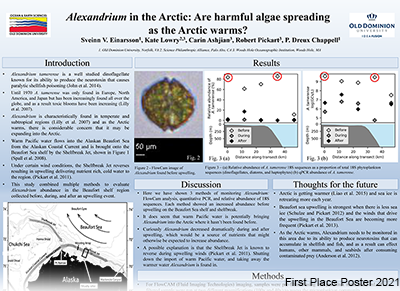ORCID
0000-0002-0043-6360 (Tapp)
College
Frank Batten College of Engineering and Technology
Department
Electrical/Computer Engineering
Program
Biomedical Engineering
Publication Date
4-2021
DOI
10.25883/mx1x-ny27
Abstract
Scoliosis is an abnormal spinal curvature of greater than 10 degrees. Severe scoliotic deformities are addressed with highly invasive procedures: anterior or posterior spinal fusion approaches. This invasiveness is due, in part, to the constraints of current surgical planning, which utilizes computed tomography (CT) scans unable to discern spinal ligaments that are dissected to make the spine sufficiently compliant for correction. If localization of ligaments and soft tissues were achieved pre-operatively, corrective procedures could become safer and more efficient by using finite element (FE) biomechanical simulations to determine decreased incidences of ligament releases. This research aims to achieve ligament localization within CT scans by deforming computer-aided design (CAD) meshes that encompass vertebrae, intervertebral discs, ligaments, and other soft tissues to emulate patient-specific anatomy. Models are generated through deformable surface algorithms that elastically fit CAD meshes onto segmentations of conspicuous structures. Surrounding soft tissues are locally warped to reconstruct contextually appropriate positions before the CAD mesh is tetrahedralized to support finite element studies. The methods presented use convolutional neural networks (CNNs) that segment vertebrae from CT images to improve initial deformation alignment. In instances of CNN failure, methodological robustness, given an accurate segmentation, is demonstrated through the use of spinal columns which have been molded into a Lenke classification. Dice coefficient and Hausdorff distance metrics demonstrate the accuracy of the deformable model generation. Synthetically generated images are used for additional validation of soft tissue positioning. Quantitative results are highly competitive and qualitative interpretations suggest a strong level of accuracy and appropriate deformation. Soft tissue ground truths, present in synthetic data, provide further confirmation of accurate mesh generation. Following the completion of the methodological pipeline, accurate, patient-specific, anatomically inclusive models are ready for use in FE studies.
Keywords
Computer Assisted Surgery, Automatic Deformable Registration, AdolescentIdiopathic Scoliosis, Patient-specific meshes, Anatomically-inclusive models
Disciplines
Biomechanics and Biotransport | Musculoskeletal Diseases | Musculoskeletal System | Surgery
Files
Download Full Text (902 KB)
Recommended Citation
Tapp, Austin; Audette, Michel; and Bennett, James, "Automatic Generation and Novel Validation of Patient-Specific, Anatomically Inclusive Scoliosis Models for Biomechanics-Informed Surgical Planning" (2021). College of Engineering & Technology (Batten) Posters. 6.
https://digitalcommons.odu.edu/gradposters2021_engineering/6

Included in
Biomechanics and Biotransport Commons, Musculoskeletal Diseases Commons, Musculoskeletal System Commons, Surgery Commons


